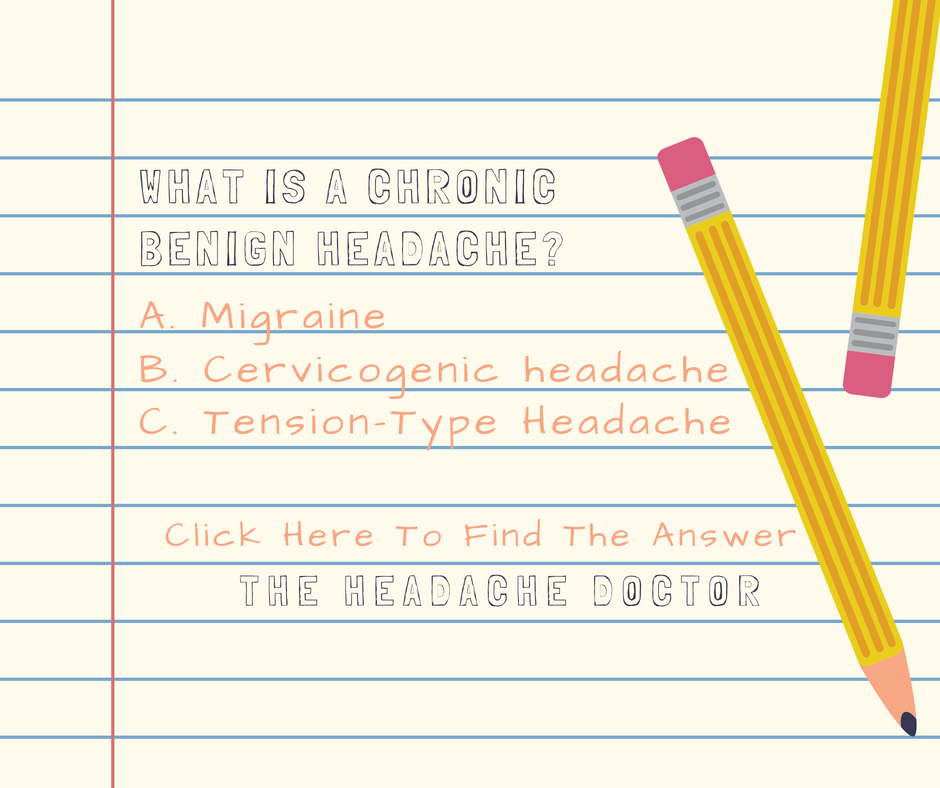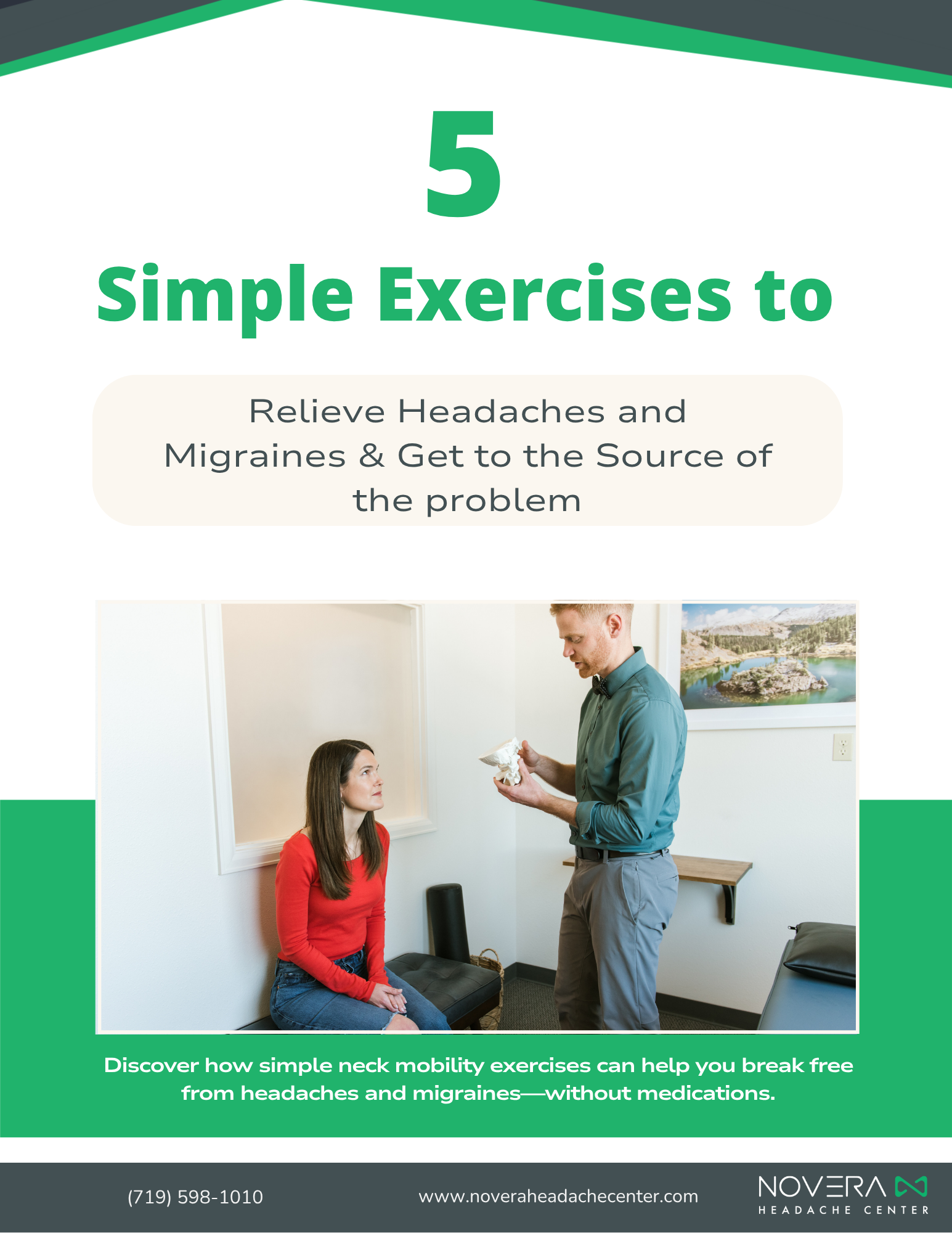
Chronic Benign Headache
What does it mean?
It means any headache that does not arise from vascular disease, metabolic dysfunction, brain tumors or trauma.
Typically the three categories that will fall under the chronic benign headache are tension-type, migraine and cervicogenic.
Why is it important to understand what a chronic benign headache is?
There is a growing cohort of evidence suggesting that our original classifications of headache pain may be hindering a providers decision making process.
How so?
Headaches are found to be one of the most commonly addressed complaints within healthcare. Practitioners rely heavily on classification systems to aid in their decision making process with everything from ankle sprains to types of cancer. Being as accurate as possible is crucial as it determines the type of treatment. This is particularly true with headaches.
Cervicogenic headaches, migraines, cluster headaches, tension-type headaches and the other various types are all difficult to distinguish. The most common types being tension-type, migraine and cervicogenic headache vary only slightly and are diagnosed based on symptom presentation rather than an objective image or test. This makes the accuracy of the diagnosis difficult as being in healthcare for any length of time you know that not all patients fit the textbook description, posing an even greater challenge.
So, back to how this classification system may be hindering patient care.
If the provider believes that the patient is suffering from a migraine the recommendation is a series of medications that act on various systems of the body. It is a trial and error approach as some medications may help while others may have little to no effect. This is the case most of the time as we really don’t understand migraines well enough to be confident in the treatment approach.
Now lets say tension-type headache is the diagnosis, which also constitutes a game of trial and error with medication management and possibly some postural recommendations/lifestyle changes to correct bad habits.
So what would the case for cervicogenic headache be? The correct intervention when dealing with a cervicogenic headache is manual or manipulative therapies. This could be a physical therapist or chiropractor and sometimes even a doctor of osteopathic medicine. The imbalance of mobility and stability of structures in the neck are leading to the headache pain and need primary intervention of hands on treatment coupled with specific exercise or postural recommendations.
In clinical practice, all three of these conditions (tension-type, migraine and cervicogenic) may benefit from manipulative and manual therapies to the cervical spine, but only the cervicogenic headache diagnosis is seen as requiring manual or manipulative therapy.
Here is the problem. Those that received a diagnosis of migraine or tension-type headache will likely never see a provider that can adequately assess and treat the neck even though there is a high probability that the patient could benefit from this conservative approach preventing them from years of medication use and days spent with headache pain.
The solution is to establish an over-arching diagnosis of chronic benign headache that is referred to a manual and manipulative therapy provider with a secondary diagnosis of tension-type, cervicogenic or migraine. This will increase the chances the patient is treated by a provider that can treat the cervical spine and restore the mobility and stability of the neck to its normal condition before moving to a medication driven approach.
Below is one of the many articles that led to this blog post. In it is a more detailed citation page and an in depth look at the probable cause of the chronic benign headache.
Alix, M. E., & Bates, D. K. (1999). A proposed etiology of cervicogenic headache: The neurophysiologic basis and anatomic relationship between the dura mater and the rectus posterior capitis minor muscle. Journal of Manipulative and Physiological Therapeutics, 22(8), 534-539.




